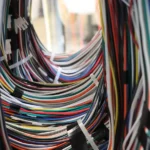The die casting process involves injecting molten metal with low melting points such as zinc and aluminum into the die casting mold and allowing it to cool. Depending on the melting point, it occurs under two different mechanisms (hot and cold chamber casting), and it is suitable for making simple and complex sheet metal parts.
The process has a unique approach and is responsible for manufacturing many metal parts used in making consumer and industrial products. However, before you use the process or outsource to companies that render such services, you should gain exquisite knowledge about it. Therefore, this article will introduce die casting, its history, its mechanisms, and the advantages and disadvantages of the die casting process.
What is Die Casting?
Die casting is a process that involves melting low melting point metals and injecting them into already made mold known as die casting mold. A mold or tools come from steel fabricated for a single project using manufacturing processes such as CNC machining. Consequently, sheet metal parts fabricated by die casting have high accuracy, precision, and repeatability.
History of Die Casting in Manufacturing
Die casting dates as far back as 1800 and was an important technique in the printing industry. In 1849, Sturges made the hand manually operated die casting machine used in printing, making it more accurate, creative, and persistent when making different complex shapes. Later in 1855, Otto Mergenthaler made the linotype machine known for its better efficiency and is an important part of the publishing industry.
The demand for die casting machines grew in the 19th century due to their advantages. Consequently, die casting became popular in many industries. During this period, there was technological advancement. For example, aluminum replaced tin and lead due to their higher quality. Also, the original process of low-pressure injection die casting changed to high-pressure casting methods.
According to Grand View Research, the Die Casting Industry currently accounts for 49.7% of the global shares in 2016 due to low-cost production rates and consistency.
Types of Die Casting Processes
The two die casting processes used industrially are hot chamber, and cold chamber dies casting. Each one has its peculiarities and is applicable in different scenarios. Below are what the two types of processes entail.
Hot Chamber Die Casting
The hot chamber die casting process is the perfect method for working with low melting point materials such as zinc, tin, lead, and magnesium alloys. It is not suitable for alloys with a higher melting point as it would damage the pump as the pump would directly contact the metal. It involves melting the metal and injecting it into the die using pressure from a hydraulic system.
Cold Chamber Die Casting
The cold chamber die casting is the perfect method for working with high melting point materials such as aluminum. This process is ideal for such metals as the high temperature needed to melt the material can damage the pumping system.
The process involves ladling the melted material into a cold chamber before injection into the die. The hydraulic system used in a cold chamber process is similar to that of the hot chamber process. However, it might require a larger pressure ranging from 2000 to 20000 psi.
Steps of Die Casting Process
Whether hot or cold chamber die casting, the standard process involves injecting molten metal into a die mold under high pressure. Below are the intricate die casting process steps:
· Clamping
The first step in die casting is clamping. However, before then, clean the die to remove any impurities and lubricate the die for better injection and removal of the solidified product. After cleaning and lubrication, clamp and close the die with high pressure.
· Injection
Melt the metal you want to inject and pour it into the shot chamber. The procedure depends on the process you are using. For example, the shot chamber is cold in the cold chamber die casting, while it is hot in the hot chamber die casting. After that, inject the metal into the die under high pressure generated by a hydraulic system.
· Cooling
While clamped, allow the metal to cool for solidification. The solidified material will have a shape similar to the design of the mold.
· Ejection
After unclamping the die mold, an ejection mechanism will push the solid casting out of the die. Ensure proper solidification before ejecting the final product.
· Trimming
This is the final step, and it involves the removal of the excess metal in the sprue and runner found on the finished product. Trimming is achievable using a trim die, saw, or other procedures. The removed metal parts are recyclable and reusable in the process.



